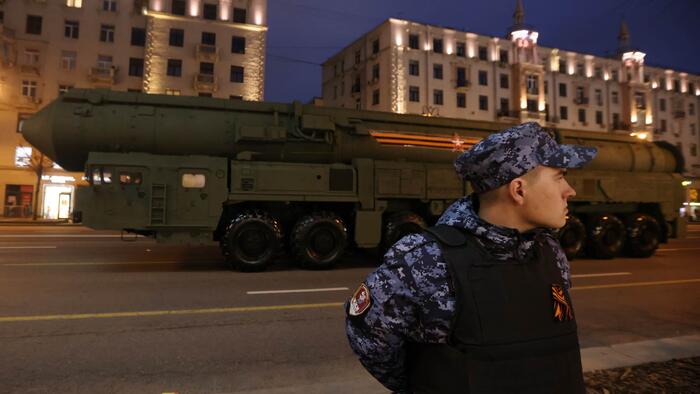In the recent commentary by Christopher Roach published through American Greatness, a growing sense of alarm surrounding the present conflict between Russia and Ukraine is articulated, alluding to the unsettling prospect of nuclear escalation. Roach reflects on his upbringing during the Cold War when the fear of nuclear confrontation was a pervasive reality that instilled a sense of caution regarding international conflicts. Significantly, during the Cold War, while tensions flared, the nuclear threat often curbed latent aggressions among superpowers, limiting conflicts to proxy wars in regions like Vietnam and Afghanistan. The recent chapter of U.S.-Russia relations, however, has revived an era of serious concern as disagreements over the international order have led to a direct and increasingly dangerous confrontation, particularly following Russia’s invasion of Ukraine in 2022.
The trajectory of the conflict has shifted dramatically since 2014, escalating from a limited engagement to a full-scale war. Initially, Western nations hesitated to provide military support to Ukraine, but as Russia’s aggression became more pronounced, Western leaders gradually altered their stance, eventually supplying advanced weaponry, including tanks and fighter jets. The provision of such military support, however, carried repercussions, prompting warnings from Russia regarding its nuclear capabilities and the idea that Western involvement could bring about severe consequences. Once Western powers authorized the use of medium-range missiles against Russian territory, the narrative escalated further, raising the stakes of the conflict to unprecedented levels and resulting in significant military developments on both sides.
The panic surrounding the potential for nuclear engagement amplified when Russia updated its nuclear strategy to permit the use of nuclear weapons in its conflict with Ukraine. Russia’s consequent launch of intercontinental ballistic missiles exemplified the seriousness of the situation, prompting urgent monitoring by NORAD and increasing the tension surrounding the conflict. In an environment where nuclear warheads are often a primary payload, the significance of these developments is dire. Observations indicate that despite their intention to conduct deconfliction communications ahead of missile launches, such actions do not mitigate the existential risks embedded within the current geopolitical landscape, raising alarm over whether nuclear weapons’ use is on the horizon.
Moreover, Roach provides a sobering assessment of Ukraine’s military prospects, arguing that the current course of the war is one of attrition that Ukraine is ill-equipped to sustain. Despite the bravery and tenacity of Ukrainian forces and substantial military support from the West, the stark realities of demographics, military losses, and territorial setbacks point towards an inevitable unraveling of Ukrainian defenses. This grim reality was starkly evident following unsuccessful summer offensives in 2023, which underscored the dwindling hopes for a Ukrainian victory or territorial recovery. The aspirations tied to Western military support are juxtaposed against a backdrop of increasing despair as Russia’s numerical and material advantages become ever more pronounced.
This analysis also returns to the global leadership dynamics, particularly the contrasting stances of current and potential American leaders. While President Biden and his administration appear committed to intensifying the conflict, there are indications that public sentiment may favor a more measured approach, particularly looking towards a potential Trump presidency that could favor negotiations. Instead of seeking de-escalation, the current approach continues to push for provocative military actions that risk further entrenchment of conflict. This ongoing policy trajectory, which seems disconnected from public opinion, creates an atmosphere ripe for unintended escalation and miscalculation with long-lasting ramifications.
As Roach concludes, the fate of global peace may hinge on the level of rationality exhibited by key actors, particularly Vladimir Putin. He contends that unique circumstances may ameliorate the risks of a nuclear confrontation, thus emphasizing the need for restraint and diplomacy over brinkmanship. The unraveling conflict between Russia and Ukraine may, at its core, be a complex territorial dispute that does not inherently threaten American security, allowing for a reexamination of why the U.S. remains so deeply entrenched in this conflict. Roach warns that continued escalation may lead to catastrophic outcomes, urging a reassessment of involvement in what he deems to be a tragic war—one that risks unleashing nuclear devastation on a global scale.

